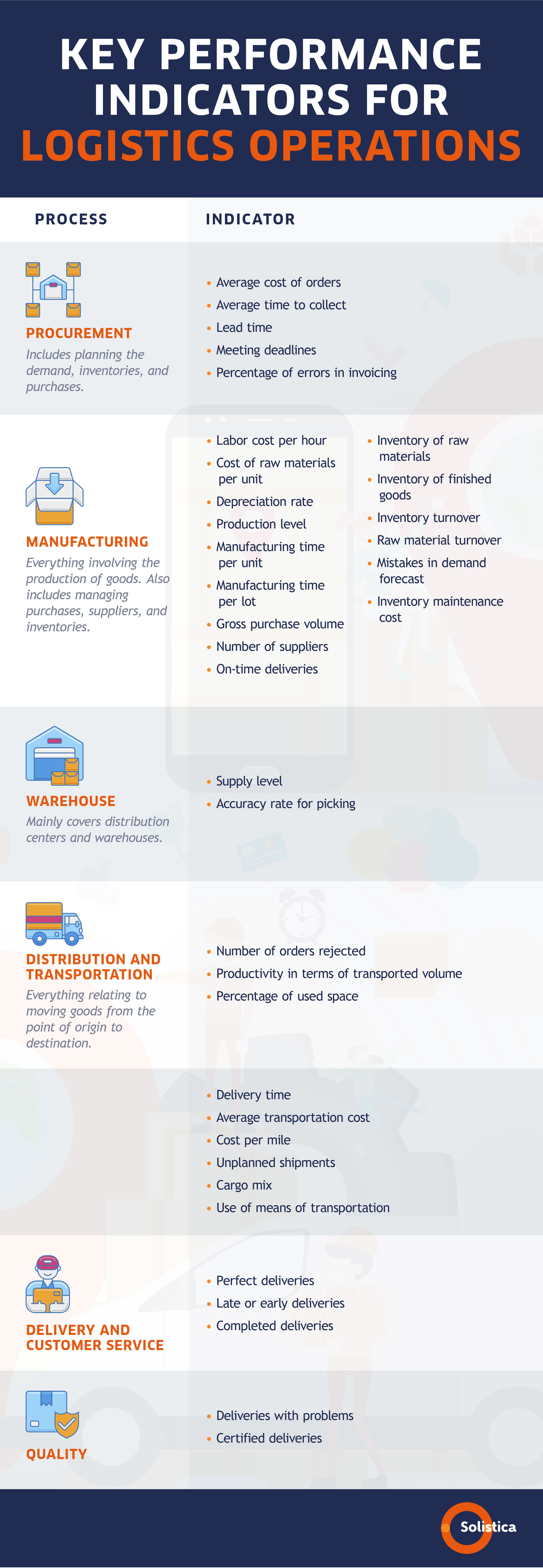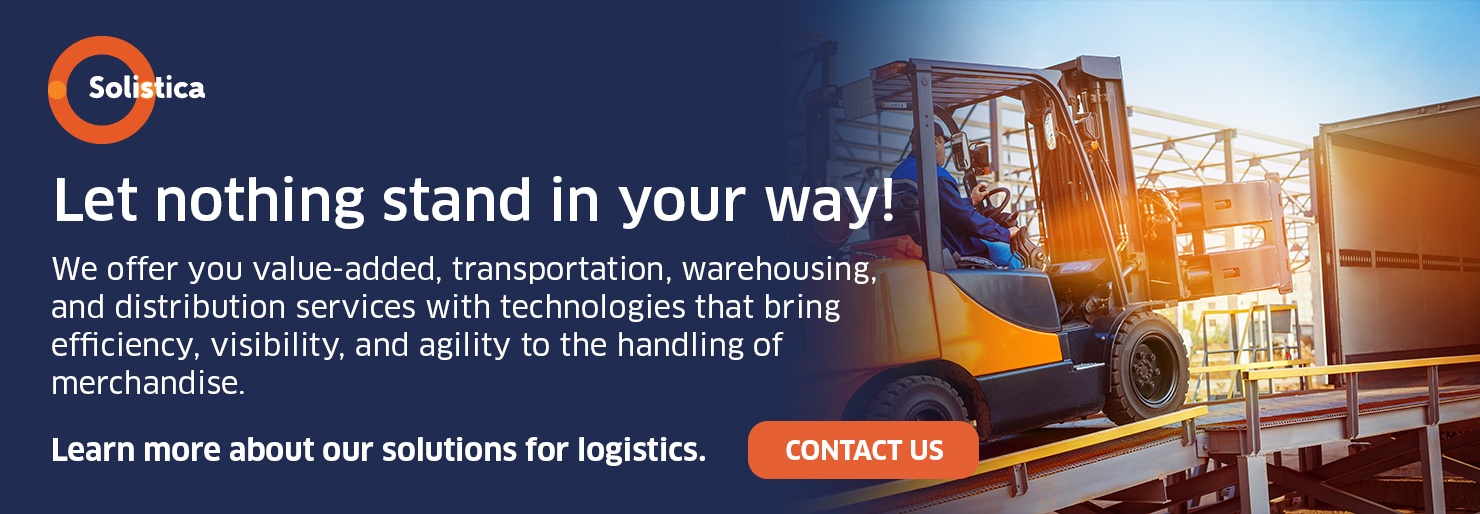Quality and continuous improvement demand measuring the performance of the supply chain so we can make sure operations are focused on clients and profitable. We analyze the performance to assess our efficiency and productivity, thus ensuring our company’s competitiveness.
We can measure all the activities carried out throughout the supply chain. The main purpose for this measuring is to know the status of the processes and their evolution so we can make better decisions regarding efficiency, expenses, time, and customer satisfaction.
To assess the operation’s performance, we suggest designing KPIs (Key Performance Indicators) and using database management systems that aim for a ROI (Return on Investment); in other words, the quotient found by dividing the result of the manufacturing and logistics system between the amount of resources used, establishing frequencies and average times for each operation.
Besides assessing our processes and setting the key indicators needed to control them, analyzing the performance of the company lets us:
- Identify the company’s operational issues and possible solutions for them.
- Understand our level of competitive advantage in the market.
- Meet our clients’ needs by lowering delivery times and by optimizing service.
- Improve our processes’ productivity and efficiency and improve our use of resources.
- Lower expenses by achieving greater efficiency in the operations.
- Benchmark against other companies in the industry.
Steps to measure performance
We must plan to measure performance in the short-, mid-, and long-terms; it should mainly cover the most relevant and least mature processes as well as arbitrary, empirical, and unstable operations. These are the steps we should follow:
1. Clearly identify each process and links of the supply chain.
Currently, the viability parameters for processes must be exhaustive for achieving continuous improvement and for the correct coordination and monitoring of the different activities.
Next, we present a table with some of the most common indicators used for the most relevant logistics processes.

Solistica’s article Logistics most important KPIs describes most of these Key Performance Indicators.
2. Describe the goal of each indicator and the variables involved in its calculation.
Set the reason and usefulness for every indicator. Financial volatility, demand volatility, insecurity, infrastructure, labor, and others deemed necessary by each company, are some of the variables to consider.
3. Gather the highest possible amount of data and information for all processes, as well as the sources of this information.
When we get information from different contact points in real time, we achieve greater visibility, which lets us test different scenarios, predict different events, and specify prevention measures.
4. Quantify and measure the variables of each indicator.
A way to measure the relevance or impact of every logistics function is via its complexity and volume of operations. For example, for the procurement function, the higher the volume of products, suppliers, purchase orders, etc., the higher the complexity of resources — time, staff, technology, and capital — it will need for planning, execution, and control. In terms of warehousing, the relevance may be dictated by the inventory management policies, the number of orders, the warehouse units, etc. For transportation, the relevance might be set by the points of origin and destination and the number of shipments carried out, among others.
5. Set infrastructure and systems that add value.
Meaning the equipment and technology that assist the execution, automation, and control of processes, providing information in real time and allowing for timely decision making.
6. Compare every indicator against the company’s, and the competitors’, global indicators.
We recommend assigning resources to assess processes and find out how mature they are. This level of maturity is established according to uniform and stable procedures.
7. Continue measuring the indicators so we can make the necessary adjustments.
To ensure a continuous improvement and the quality of the processes we need to constantly monitor our KPIs.
We collect and show the measuring systems in a control panel or in personalized report for each area, integrating the KPIs and other reports. These formats should be updated constantly so we can have reliable information that can be used by our business intelligence systems, resulting in:
- Greater ability to analyze performance.
- Identification of patterns and trends to expedite the decision-making process.
- Meet the tactical and strategic goals of the supply chain.
Logistics issues a CEO should consider
A lack of measurement of the logistics activities is one of the obstacles top managers face; if we do not measure, we cannot identify the main issues arising in the whole logistics chain, hurting the company’s competitiveness in the markets it participates in.
For a CEO to be assertively involved in the management of the company’s logistics activities, she or he must consider, in the performance assessment, the following premises that guide the logistics activities in a context of globalization, digitalization, and customer service.
Logistics operations are part of the business’ performance
Continue working following the traditional model called SCOR (Supply Chain Operations Reference) means each area or department follows its own processes individually under a linear sequence that most of the times makes the logistics organization inefficient, with longer execution times, and a disjointed decision-making process.
By operating in different ways, the information generated by each area –planning, procurement, warehousing, manufacturing, and distribution – is subject to margins of error that slow down and financially bleed the supply chain.
Having metrics enables linking the data from every silo or area of the company, processing them over linked information systems, giving enough flexibility to make decisions fast so we can face the demands of the current ever-changing environment.
In this sense, CEOs should bet on outsourcing the management of logistics following a new model of operations that take advantage of the collaboration of logistics suppliers to integrate diverse systems that run the right data autonomously, thus eliminating margins of error and increasing productivity and performance.
Data is the basis for understanding the company’s logistics performance
To make changes in the company’s logistics, we must identify the sources of the information we are to assess and how this information flows. By gathering this data in real time from several contact points, we can create a digital footprint of the physical logistics chain so we can see the results from one end of the chain to the other.
This way, the person in charge of logistics can test different scenarios, adjusting the digital model of the chain to plan and predict different events and prescribe preventive measures for the challenges that may arise.
Having an expert logistics operator with a platform to manage the supply chain that can easily adapt to our multiple interconnected systems, gives companies reliable tools to accurately and timely measure their logistics performance so they can improve the agility of their logistics operations and increase their ability to recover.
Some specialized logistics companies, like Solistica, can help you define a strategy to analyze your logistics performance and the benefits you might get from it.
*This blog was originally published on June 10 2019 and modified on May 17 2022.






